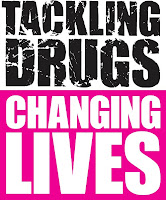WHY INVEST MORE MONEY IN DRUG ABUSE PREVENTION?
AFTER ALL, IT WON'T FIX THE PROBLEM, WILL IT?
AFTER ALL, IT WON'T FIX THE PROBLEM, WILL IT?
"Prevention programs are not vaccinations
that inoculate children against substance abuse.
Sadly, significant numbers of young people
who participate in the best programs
will go on to use drugs."
("Preventing Drug Abuse," Office of National Drug Control Policy, 1999)
We all know the reality of drug abuse prevention. No knowledgeable person would claim that prevention programs alone will stop the nationwide epidemic of drug abuse by American youth. Despite our best efforts to educate children about the dangers of abuse, many will choose to experiment with substances and take active roles in the drug culture.
Let's not kid ourselves about the massive changes in society
that must be initiated to stop the deadly consequences of drug dependency.
Children can be negatively influenced by
their families,
their schools,
their neighborhoods,
and popular culture – especially the media.
HOWEVER
Preventing drug abuse is one of the best investments we can make in our country's future. Doing so is preferable to dealing with the consequences of drug abuse through law enforcement or drug treatment.
The "no-use" message must be reinforced consistently by parents, teachers, clergy, coaches, mentors, and other care givers.
AND, EVIDENCE SHOWS
PREVENTION DOES WORK
A. Studies indicate that students' attitudes, beliefs, and skills that counter or resist substance abuse and other kinds of delinquent or violent behavior can be enhanced by instructional approaches combining social and thinking skills with resistance skills.
(Botvin, Baker, Dusenbury, et al. 1995; Greenberg, Kusche, Cook, and Quamma, 1995; Caplan, Weissberg, Grober, et al. 1992; and Bry, 1982).
Evidence supports that students in strong prevention programs can learn the following:
* Empathy and perspective-taking, which demonstrates that people can have different views of the same situation.
* Social problem-solving, which allows students to solve social problems with a series of steps that involve setting pro-social goals, generating alternative solutions. anticipating the consequences of actions, choosing the best course of action, and successfully executing the solution.
* Anger management or impulse control, which helps students understand how anger escalates and teaches personal techniques for controlling it.
* Communication skills, which involve students’ active listening, understanding of nonverbal communication, and ways to express their thoughts and feelings in a non-inflammatory manner.
* Stress management or coping skills, which provide adaptive strategies for dealing with or relieving stress or anxiety.
* Media literacy skills that help students recognize and resist media influences that glorify violence or substance abuse.
* Assertiveness skills that provide students with methods of working toward their goals without provoking others.
* Character/belief development that helps students understand how the content of their beliefs affects the decisions they make. Teaching these skills is sometimes referred to as character education or normative education.
* Resistance skill training that helps students rebuff peer pressure toward substance abuse and violence.
B. Good junior high school interventions affect knowledge and attitudes about drugs, use of cigarettes and marijuana, and persist into the twelfth grade.
(Botvin, G. J., Baker, E.,Dusenbury, L., Botvin, E.M., and Diaz, T. "Long-Term Follow-Up Results of a Randomized Drug Abuse Prevention Trial in a White Middle-Class Population," Journal of the American Medical Association, Vol. 273, (1995), pp. 1106-1112.)
C. A Cornell University study of six thousand students in New York state found that the odds of drinking, smoking, and using marijuana were 40 percent lower among students who participated in a school-based substance-abuse program in grades seven through nine than among their counterparts who did not. Similarly, an assessment of Project STAR found that forty-two participating schools in Kansas City, Missouri reported less student use of alcohol, tobacco, and marijuana than control sites.
(Information about prevention findings at Cornell University, Project STAR and other CSAP grantee programs can be obtained online, January 29, 1999.)
D. Since rates of drug use seem to spread in a manner similar to an epidemic, prevention will be more effective when undertaken EARLY in the cycle when use is proliferating with existing users introducing others to drugs.
"At this time, enabling
ONE PERSON TO ABSTAIN CAN PREVENT OTHER INITIATIONS.
Rather than be reactive,
Rather than be reactive,
prevention programs should be proactive
and reach each rising cohort."
The NIDA pamphlet Preventing Drug Use Among Children an Adolescents: A Research-Based Guide. (Department of Health and Human Services, National Institutes of Health, National Institute on Drug Abuse,March 1997, reprinted November 1997, January 29, 1999)
The NIDA pamphlet Preventing Drug Use Among Children an Adolescents: A Research-Based Guide. (Department of Health and Human Services, National Institutes of Health, National Institute on Drug Abuse,March 1997, reprinted November 1997, January 29, 1999)
RISK FACTORS AND
PROTECTIVE FACTORS
Research over the past two decades has tried to determine how drug abuse begins and how it progresses. Many factors can add to a person’s risk for drug abuse. Risk factors can increase a person’s chances for drug abuse, while protective factors can reduce the risk. Please note, however, that most individuals at risk for drug abuse do not start using drugs or become addicted. Also, a risk factor for one person may not be for another.
"Risk and protective factors can affect children
at different stages of their lives.
At each stage, risks occur
that can be changed through
prevention intervention."
At each stage, risks occur
that can be changed through
prevention intervention."
("Preventing Drug Abuse Among Children and Adolescents," National Institute On Drug Abuse, U.S. Department of Health and Human Services, 2011)





















